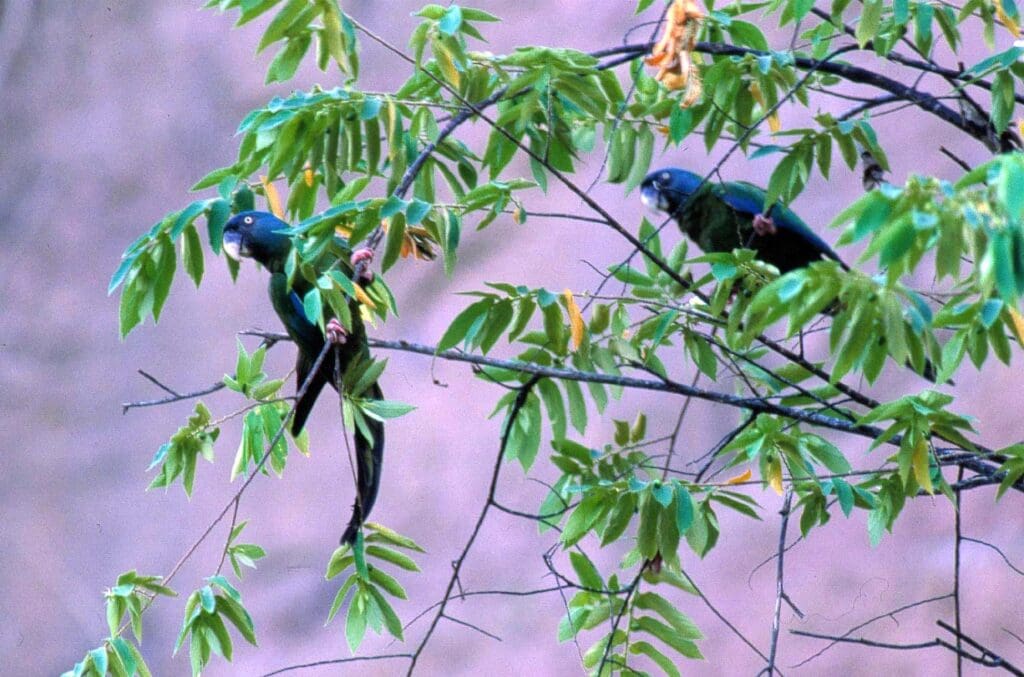Blue-headed Macaw (Primolius couloni) populations are expected to decline by 30% over three generations.
The World Parrot Trust supported biologist Toa Kyle in a search for Blue-headed Macaws along the Ucayali River in Peru in the fall of 2007. The survey added important data to the current information on this poorly known species. More surveys along the entire range of the species are necessary to determine accurate population numbers. Further study by others has pointed to the importance of determining the degree to which this species occurs in protected areas. Preventing trade and educating local people about the fragility of the species have also been suggested.
Status: IUCN Vulnerable / CITES Appendix I
Population: 9200-46,000 mature individuals, decreasing.
Threats: Over the past three generations (15 years), 4.5% of tree cover has been lost within this macaw’s range. The species, however, tolerates habitat conversion or may even benefit from it, therefore forest loss alone may not be driving a population decline. Until recently, the species was rarely seen in trade, however it appears that trapping is now increasing.
Range: E Peru to W Brazil; N Bolivia, east of Andes and south to 14 degrees latitude.
Natural history: Blue-headed Macaws are found at 150-1300 m (492-4264 ft) in upper tropical forests in disturbed or partly open areas at forest edge along rivers, clearings and forested settled areas; also in swampy habitats. Individual birds are not very gregarious; instead, they are found in pairs or threes. They are possibly seasonally nomadic.

